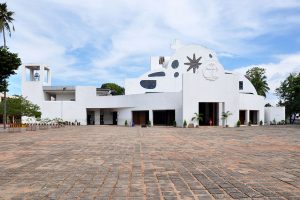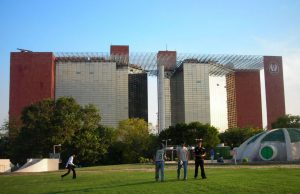Charles Correa
Charles Correa was an Indian architect famed for his modern architectural designs in a post-independent India. Correa was renowned for his use of traditional materials and methods in his designs, as well as his consideration of the needs of the poor and less fortunate in India’s urban communities.
Over his career, Correa designed over 100 buildings in India, including both luxury accommodation and low-income housing. Rather than copying traditional styles of modern architecture, Correa designed buildings rooted in the unique styles of India’s various local cultures.

Parumala Church in Parumala, Kerala, India
One of Correa’s most notable works is the Incremental Housing project in New Bombay, which he designed in the mid-1980s to demonstrate that it is better to accommodate high-density populations in low-rise homes with shared spaces. Correa also designed Mumbai’s luxury Kanchenjunga Apartments with sea-facing balconies to protect them from weather damage. In 1990, Correa designed Delhi’s National Craft Museum to mimic the appearance of a village street, as a co-dependent and cohesive structure.
Architecture is sculpture with the gestures of human occupation.- Charles Correa.
Correa also designed projects overseas. His last work was the Ismaili Centre in Toronto, which is designed to serve as an architectural interpretation of Islam, built to face Mecca.

Ismaili Centre, Toronto. Opened in 2014. By JohnOyston – Own work, CC BY-SA 4.0
Correa’s groundbreaking style of merging local culture with modernist design principles has made him one of India’s most famous architects. In 1984, he founded the Urban Design Research Institute in Mumbai to improve the living conditions of India’s poorest communities, leaving a lasting legacy.

The LIC building at Connaught Place, New Delhi. MattHartzell / CC BY-SA
Cover Image Champalimaud Centre for the Unknown by Carlos Luis M C da Cruz / CC BY-SA





